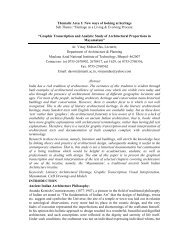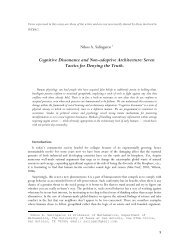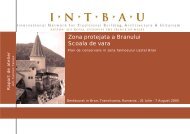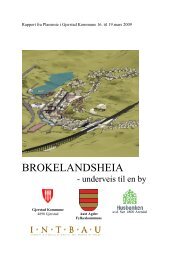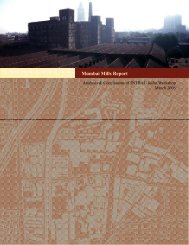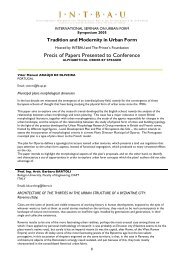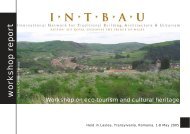S. Dalvi - Intbau
S. Dalvi - Intbau
S. Dalvi - Intbau
Create successful ePaper yourself
Turn your PDF publications into a flip-book with our unique Google optimized e-Paper software.
Heritage Conservation and Fast KnowledgeThe issue of heritage conservation has developed a keener resonance in the era of fastknowledge. Heritage legislation breathes easier in an environmental stasis, when buildings soidentified continue to remain so and only face the natural structural ravages of time. It is whenthe buildings are fore grounded in the identity and aspiration of its users or the community atlarge that change, such as it is, is inevitable, and the old is constantly under pressure to give wayto the new. This is where the issue of preservation through legislation comes into direct conflictwith its ultimate beneficiaries.In the Raigad district, as in the rest of the Konkan, the issues of continuity and change areconfronted, rather awkwardly. The processes of change depend on whose point of view is beingtaken. The several points of view, though legitimate in themselves sit side by side uneasilywherethe first step in addressing one point of view would be to the perceived detriment of theother. Here, the sacred sites reflect both the need to preserve, as well as for the local communitythe desire to change.Whereas one cannot make a case for up-gradation to stop merely by putting these building in alist and legislating, the heritage gets a much better chance of being conserved by gainingacceptance as ‘one’s own heritage’ within the community itself. Any heritage listing will need asustained programme of awareness creation in order to be successful on the ground.This analysis offers some vital clues whether to conserve such sacred sites and how to go aboutdoing it. A strong case has emerged in favor of their conservation. “Whether the sacred sites arelarge or small, whether they are at the center of the towns, in the neighborhoods, or in thedeepest countryside, establish ordinances which will protect them absolutely- so that our roots inthe visible surroundings cannot be violated.” (Alexander, 1977) Absolute protection calls forspecificity in legislation and notification. When it comes to places traditionally accepted assacred by an entire community, no other method of preservations can be adopted before ensuringthe preservation of such sites by law. Not doing anything will mean a place falls into ruin atnature’s pace. Intervention, if misguided or with malafide intent can destroy heritage overnight.BIBLIOGRAPHY1. Aalekar, Dr. B. (1970) Panvel Shaharatil Mandire. Navakal (Marathi), Daily Edition,May 11.2. Alexander, C., et al. (1977), A Pattern Language, Oxford University Press, N. Y.3. Centenary Souvenir of the Panvel Municipal Council (1957)4. Gazetteer of the Bombay Presidency, Thana dist. Vol XIII, part I (1882)5. Heschong, L. (1990), Thermal Delight in Architecture, the MIT Press.6. International Charter For The Conservation And Restoration Of Monuments And Sites(ICOMOS) (1964)7. Israel, B. (date NA), The Bene Israel of India, OUP.8. Schwartz, B. (2003) India’s Bene Israel, B'nai B'rith Magazine, Summer Edition.From < http://bnaibrith.org/pubs/bnaibrith/2003_sum__india.cfm?india=3 >(Retrieved December 10 2007)9. Uran Municipal Council, Centenary Celebration Volume (1987)





